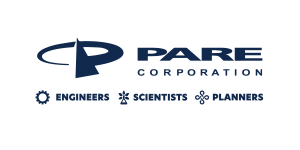Concrete Repair Techniques
Contents
- Considerations for Concrete Repair
- Repair Methods
- Concrete Use Guidelines
- Crack Repair
- Dam Owner Academy
- Save this page as a printable Dam Owner's Fact Sheet [PDF]
Concrete is an inexpensive, durable, strong and basic building material often used in dams for core walls, spillways, stilling basins, control towers, and slope protection. However, poor workmanship, construction procedures, and construction materials may cause imperfections that later require repair. Any long-term deterioration or damage to concrete structures caused by flowing water, ice, or other natural forces must be corrected. Neglecting to perform periodic maintenance and repairs to concrete structures as they occur could result in failure of the structure from either a structural or hydraulic standpoint. This in turn may threaten the continued safe operation and use of the dam.
Considerations for Concrete Repair
Floor or wall movement, extensive cracking, improper alignments, settlement, joint displacement, and extensive undermining are signs of major structural problems. In situations where concrete replacement solutions are required to repair deteriorated concrete, it is recommended that a registered professional engineer be retained to perform an inspection to assess the concrete's overall condition and determine the extent of any structural damage and necessary remedial measures.
Typically, it is found that drainage systems are needed to relieve excessive water pressures under floors and behind walls. In addition, reinforcing steel must also be properly designed to handle tension zones and shear and bending forces in structural concrete produced by any external loading (including the weight of the structure). Therefore, the finished product in any concrete repair procedure should consist of a structure that is durable and able to withstand the effects of service conditions such as weathering, chemical action, and wear. Major structural repairs that require professional advice are not addressed here.
Repair Methods
Before any type of concrete repair is attempted, it is essential that all factors governing the deterioration or failure of the concrete structure are identified. This is required so that the appropriate remedial measures can be undertaken in the repair design to help correct the problem and prevent it from occuring in the future. The following techniques require expert and experienced assistance for the best results. The method of repair will depend on the size of the job and the type of repair required.
- The Dry-Pack Method: The dry-pack method can be used on small holes in new concrete which have a depth equal to or greater than the surface diameter. Preparation of a dry-pack mix typically consists of about 1-part portland cement and 2-1/2-parts sand to be mixed with water. You then add enough water to produce a mortar that will stick together. Once the desired consistency is reached, the mortar is ready to be packed into the hole using thin layers.
- Concrete Replacement: Concrete replacement is required when one-half to one square foot areas or larger extend entirely through the concrete sections or where the depth of damaged concrete exceeds 6 inches. When this occurs, normal concrete placement methods should be used. Repair will be more effective if tied in with existing reinforcing steel (rebar). This type of repair will require the assistance of a professional engineer experienced in concrete construction.
- Replacement of Unformed Concrete: The replacement of damaged or deteriorated areas in horizontal slabs involves no special procedures other than those used in good construction practices for placement of new slabs. Repair work can be bonded to old concrete by use of a bond coat made of equal amounts of sand and cement. It should have the consistency of whipped cream and should be applied immediately ahead of concrete placement so that it will not set or dry out. Latex emulsions with portland cement and epoxy resins are also used as bonding coats.
- Preplaced Aggregate Concrete: This special commercial technique has been used for massive repairs, particularly for underwater repairs of piers and abutments. The process consists of the following procedures:
- Removing the deteriorated concrete,
- Forming the sections to be repaired,
- Prepacking the repair area with coarse aggregate, and
- Pressure grouting the voids between the aggregate particles with a cement or sand-cement mortar.
- Synthetic Patches: One of the most recent developments in concrete repair has been the use of synthetic materials for bonding and patching. Epoxy-resin compounds are used extensively because of their high bonding strength. In applying epoxy-resin patching R 07/08/99 mortars, a bonding coat of the epoxy resin is thoroughly brushed onto the base of the old concrete. The mortar is then immediately applied and troweled to the elevation of the surrounding material.
Before attempting to repair a deteriorated concrete surface, all unsound concrete should be removed by sawing or chipping and the patch area thoroughly cleaned. A sawed edge is superior to a chipped ege, and sawing is generally less costly than mechanical chipping. Before concrete is ordered for placing, adequate inspection should be performed to ensure that
- Foundations are properly prepared and ready to receive the concrete,
- Construction joints are clean and free from defective concrete,
- Forms are grout-tight, amply strong, and set to their true alignment and grade,
- All reinforcement steel and embedded parts are clean, in their correct position, and securely held in place, and
- Adequate concrete delivery equipment and facilities are on the job, ready to go, and capable of completing the placement without additional unplanned constriction.
Concrete Use Guidelines
In addition to its strength characteristics, concrete must also have the properties of workability and durability. Workability can be defined as the ease with which a given set of materials can be mixed into concrete and subsequently handled, transported, and placed with a minimal loss of homogeneity. The degree of workability required for proper placement and consolidation of concrete is governed by the dimensions and shape of the structure and by the spacing and size of the reinforcement. The concrete, when properly placed, will be free of segregation, nad its mortar is intimately in contact with the coarse aggregate, the reinforcement, and/or any other embedded parts or surfaces within the concrete. Separation of coarse aggregate from the mortar should be minimized by avoiding or controlling the lateral movement of concrete during handling and placing operations. The concrete should be deposited as nearly as practicable in its final position. Placing methods that cause the concrete to flow in the forms should be avoided. The concrete should be placed in horizontal layers, and each layer should be thoroughly vibrated to obtain proper compaction.
All concrete repairs must be adequately moist-cured to by effective. The bond strength of new concrete to old concrete develops much more slowly, and the tendency to shrink and loosen is reduced by a long moist-curing period. In general, the concrete repair procedures discussed above should be considered on a relative basis and in terms of the quality of concrete that one wishes to achieve for their construction purpose. In addition to being adequately designed, a structure must also be properly constructed with concrete that is strong enough to carry the design loads, durable enough to withstand the forces associated with weathering, and yet economical, not only in first cost, but in terms of its ultimate service. It should be emphasized that major structural repairs to concrete should not be attempted by the owner or persons not experienced in concrete repairs. A qualified professional engineer experienced in concrete construction should be obtained for the design of large-scale repair projects.
Crack Repair
The two main objectives when repairing cracks in concrete are structural bonding and stopping water flow. For a structural bond, epoxy injection can be used. This process can be very expensive since a skilled contractor is needed for proper installation. The epoxy is injected into the concrete under pressure, welding the cracks to form a monolithic structure. This method of repair should not be considered if the crack is still active (moving). For a watertight seal, a urethane sealant can be used. The repair technique does not form a structural bond; however it can be used on cracks that are still active. Cracks should be opened using a concrete saw or hand tool prior to placing the sealant. A minimum opening of 1/4 inch is recommended since small openings are hard to fill. Urethane sealants can be reapplied since they are flexible materials and will adhere to older applications. All of the factors causing cracking must be identified and addressed before repairing the concrete to prevent the reoccurrence of cracks.
Dam Owner Academy
The Dam Owner Academy is a series of videos to educate and inform owners on all aspects of operating and maintaining a dam safely. The videos concisely present the critical basics of owner responsibilities and are available as a free resource for owners and those conducting owner outreach programs.
The "Concrete Problems & Repairs" video covers concrete repair techniques.


































